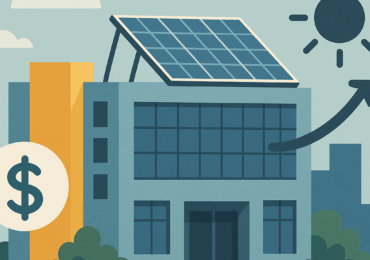As energy efficiency becomes increasingly important in commercial development, businesses and architects are recognizing the transformative benefits of integrating solar power into their designs. By incorporating solar panels into the initial planning stages, companies can significantly reduce long-term operational costs while promoting a sustainable future. Solar energy is no longer just an afterthought; it has become a fundamental aspect of modern, eco-friendly architecture. This shift reflects a commitment not only to innovation but also to fostering a harmonious relationship with the environment in every structure they create.

The Case for Solar in Commercial Design
Commercial properties consume a significant amount of energy daily. From lighting and HVAC systems to industrial machinery and office electronics, the demand for power is constant. Traditionally, this power is sourced from fossil fuels, contributing to high utility costs and environmental degradation. Solar energy offers a clean, renewable, cost-effective, scalable alternative.
Incorporating solar into the architectural design phase maximizes both efficiency and aesthetics. Flat rooftops, large parking lots, and even the building’s façade offer valuable real estate for photovoltaic (PV) panels. When designed with solar in mind, structures can be optimized for sun exposure, panel placement, and energy storage—all without compromising visual appeal.
Benefits Beyond the Bill
Installing solar panels on commercial buildings isn’t just about cutting down on electricity bills. It’s also a strategic move that improves a company’s ESG (Environmental, Social, Governance) profile. Consumers and clients are paying closer attention to how businesses impact the planet, and a solar-powered facility speaks volumes about a company’s commitment to sustainability.
Moreover, solar installations can increase property values and provide insulation benefits that improve indoor temperature regulation. Financial incentives, such as tax credits and grants, make solar financially savvy. When paired with battery storage systems, businesses can manage peak energy loads more effectively and even maintain operations during grid outages.
Smart Integration and Planning
To get the most out of solar technology, integration must be deliberate. This means collaborating with solar specialists and architects from the start to ensure that panel layout, wiring, and inverter placement align with the building’s structural and functional needs.
A tailored solution makes all the difference, especially for large facilities or those with complex layouts. That’s why many businesses turn to commercial solar panel installation services that can offer site-specific guidance, from feasibility studies to system design and implementation.
Looking Ahead
The commercial sector stands at a crossroads—continue relying on traditional energy sources or embrace the potential of solar-integrated design. As building codes evolve and sustainability becomes a requirement rather than a preference, those who adapt early will benefit most.
With energy prices rising and public demand for green initiatives growing, now is the time for businesses to rethink how their buildings function. Once seen as a niche option, solar power has become a practical, mainstream solution that aligns long-term savings with environmental responsibility.
Whether you’re planning a new commercial development or upgrading an existing one, integrating solar into your architecture is a forward-thinking move that delivers tangible returns for years to come.